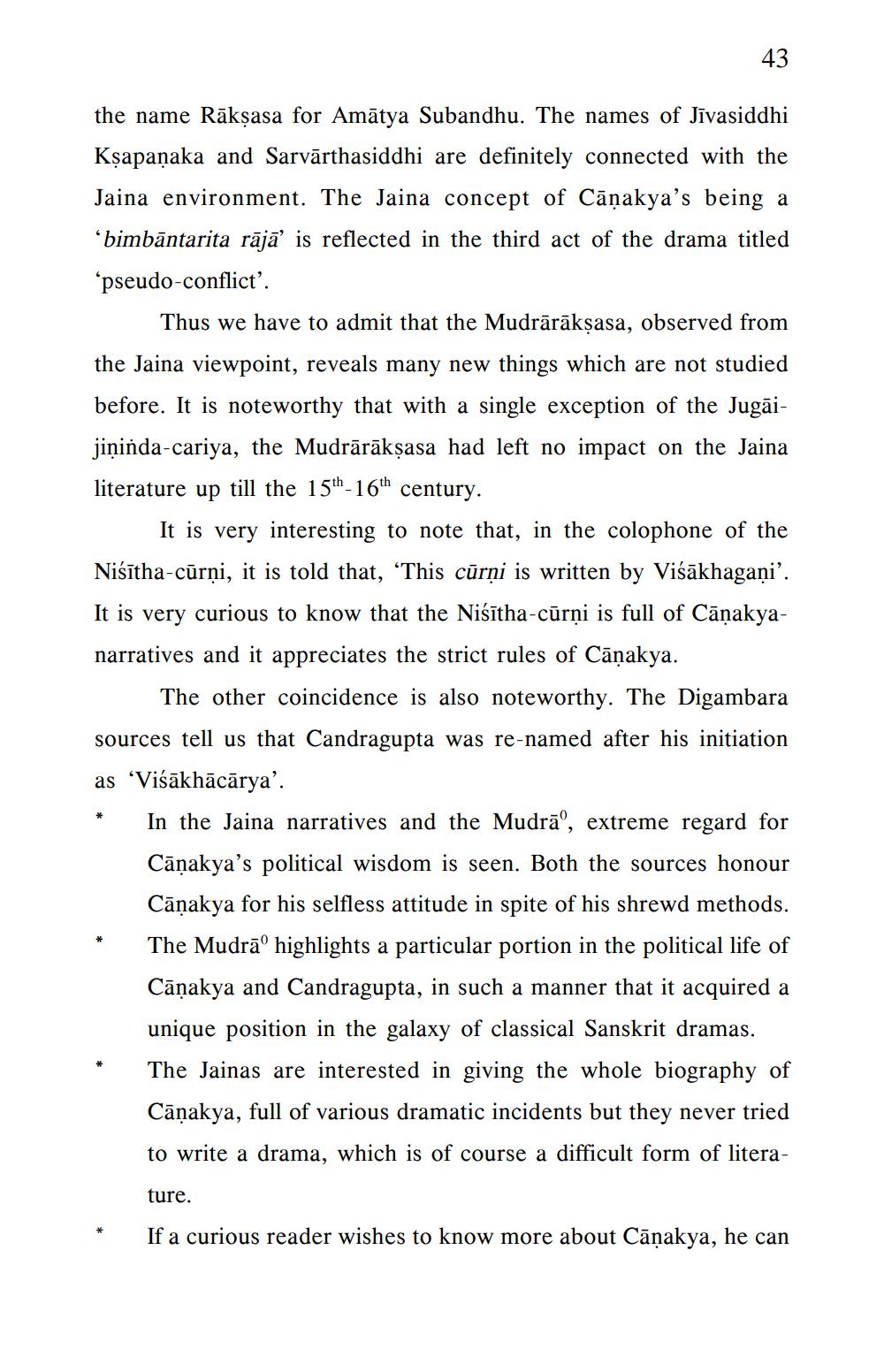________________
43
the name Rākṣasa for Amātya Subandhu. The names of Jīvasiddhi Kșapaņaka and Sarvārthasiddhi are definitely connected with the Jaina environment. The Jaina concept of Cāņakya’s being a
bimbāntarita rājā is reflected in the third act of the drama titled 'pseudo-conflict'.
Thus we have to admit that the Mudrārākşasa, observed from the Jaina viewpoint, reveals many new things which are not studied before. It is noteworthy that with a single exception of the Jugāijiņinda-cariya, the Mudrārāksasa had left no impact on the Jaina literature up till the 15th 16th century.
It is very interesting to note that, in the colophone of the Niśītha-cūrņi, it is told that, “This cūrņi is written by Viśākhagaņi'. It is very curious to know that the Niśītha-cūrņi is full of Cāņakyanarratives and it appreciates the strict rules of Cāņakya.
The other coincidence is also noteworthy. The Digambara sources tell us that Candragupta was re-named after his initiation as 'Viśākhācārya’.
In the Jaina narratives and the Mudrā', extreme regard for Cāņakya's political wisdom is seen. Both the sources honour Cāņakya for his selfless attitude in spite of his shrewd methods. The Mudrā° highlights a particular portion in the political life of Cāņakya and Candragupta, in such a manner that it acquired a unique position in the galaxy of classical Sanskrit dramas. The Jainas are interested in giving the whole biography of Cāņakya, full of various dramatic incidents but they never tried to write a drama, which is of course a difficult form of litera
ture.
If a curious reader wishes to know more about Cāņakya, he can




